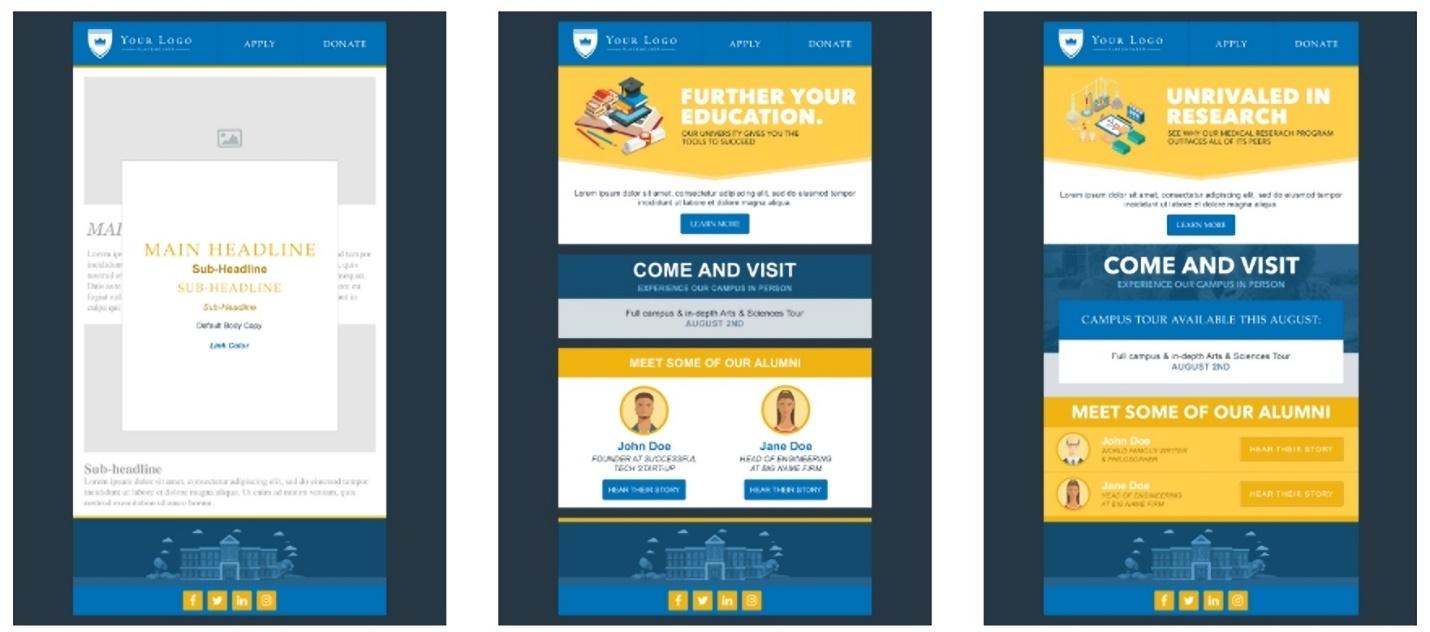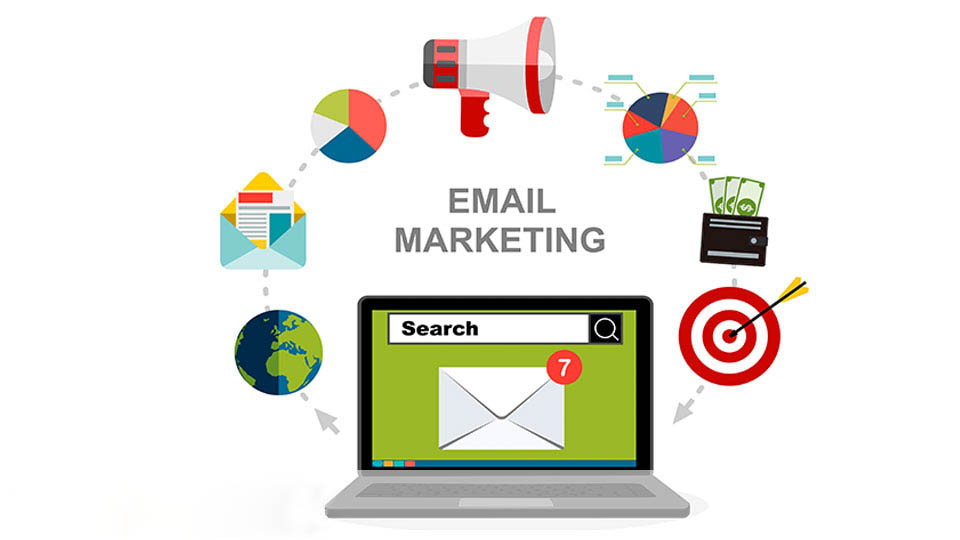
CRM Integration for B2B Telemarketing Success
March 6, 2024
How to Find Your Target Audience
March 7, 2024In the ever-evolving landscape of digital marketing, lead nurturing has emerged as a crucial strategy for cultivating potential customers into loyal patrons. At the heart of this process lies the automated email series, a powerful tool designed to delicately guide leads through the sales funnel without bombarding them with overt sales pitches. In this comprehensive exploration, we will delve into the nuances of lead nurturing through emails, unraveling the various types of content that can be employed to engage and convert leads effectively.

1. Educational Email Content: Building Foundations
The foundation of any successful lead nurturing campaign is laid with educational content. These emails should not be overtly sales-driven but should rather focus on providing valuable, low-commitment information. For instance, a sporting goods manufacturer could impart knowledge on workout techniques rather than directly pushing product sales. This approach establishes a rapport with leads, positioning the company as an authority in its field.
These educational emails can include links to whitepapers, blog articles, and videos, creating a curated journey for the leads to familiarize themselves with the business organically. By genuinely addressing the recipients’ needs and goals, a sense of trust is fostered, setting the stage for more meaningful interactions.
2. Promotional Email Content: The “Loss Leader” Strategy
While educational content is foundational, incorporating promotional emails strategically is equally important. The “loss leader” strategy involves offering a basic product at an entry-level price, aiming to build a customer base for future recurring revenue. This aligns with the objective of lead nurturing, as it identifies early-stage buyers who have already shown interest in the business.
By mixing in promotional emails with educational ones, companies can maintain a delicate balance between nurturing leads and gently guiding them towards making a purchase. The key lies in identifying and targeting those leads who are more likely to convert, optimizing the impact of promotional offers.

3. Best Practices Email: Guiding Leads to Success
A variation of the educational content email, the best practices email revolves around creating a theme based on actionable advice that readers can apply. For example, providing best practices for maintaining a healthy and nutritional diet would resonate with individuals interested in such topics.
By consistently delivering valuable tips and guidance, companies keep leads engaged and eager for the next piece of communication. Witnessing the tangible results of applying these best practices enhances trust and builds a stronger inclination towards purchasing the products or services when the opportunity arises.
4. Product/Service-Related Emails: Moving Towards Solutions
As leads progress through the nurturing process, a more detailed exploration of the product or service becomes relevant. This email series, considered the second stage, is accessible only to leads who have expressed a keen interest in understanding the solution in greater detail.
The content of these emails may encompass:
a) Detailed description of solution features and benefits b) Explanation of problems and scenarios the solution aims to address c) Case studies illustrating the application and results of the solution d) Testimonials from satisfied users e) A compelling call-to-action for a solution demo, free trial, or face-to-face meeting
This stage serves as a bridge between information dissemination and the direct promotion of the product or service, ensuring that leads are sufficiently informed before a more overt sales approach is initiated.

5. Personal Email: Humanizing the Brand
As leads progress down the sales funnel, sending personalized emails from a sales team member becomes a valuable tactic. This approach injects a personal touch, allowing leads to ask specific questions and engage with a real person rather than being part of an email group.
Humanizing the brand in this manner creates a more intimate connection, potentially tipping the scales in favor of conversion. This personalized approach fosters trust and demonstrates a genuine commitment to understanding and addressing the unique needs of the lead.
6. A List of Resources: Curating Engaging Content
Lists have perennially proven to be attention-grabbing, and this principle can be applied to lead nurturing emails. By presenting curated lists of resources, such as blog articles or useful content, recipients are more likely to engage with the material.
This approach not only simplifies the consumption of information but also positions the company as a valuable curator of relevant content. By consistently providing valuable resources, leads are more likely to view the company as a trusted source of information, influencing their decision-making process positively.

7. Survey and Feedback Emails: Fine-Tuning Engagement
In addition to the aforementioned content types, incorporating survey and feedback emails can add a valuable layer to the lead nurturing process. These emails provide an opportunity to gather insights directly from leads, allowing businesses to fine-tune their strategies and offerings based on real-time feedback.
By designing surveys that delve into the preferences, challenges, and expectations of leads, companies can tailor their future communications more effectively. Furthermore, expressing a genuine interest in understanding the lead’s perspective fosters a sense of partnership and can solidify the bond between the lead and the brand.
8. Exclusive Offers and VIP Access: Fostering a Sense of Exclusivity
To incentivize leads further and move them closer to conversion, integrating exclusive offers and VIP access emails can be highly effective. These emails provide special promotions, discounts, or early access to new products or services, creating a sense of exclusivity.
By making leads feel like privileged members of an exclusive community, businesses can heighten the perceived value of their offerings. This tactic not only accelerates the lead nurturing process but also enhances brand loyalty by establishing a unique connection between the brand and the lead.

9. Milestone Celebration Emails: Acknowledging Progress
Celebrating milestones in the lead’s journey is a powerful way to reinforce positive interactions and acknowledge their progress. This can include commemorating the lead’s anniversary since joining the mailing list, reaching a certain engagement level, or even recognizing the completion of a trial period.
Sending personalized milestone celebration emails demonstrates a commitment to the lead’s journey, creating a positive emotional connection. This not only strengthens the bond but also serves as a subtle reminder of the value the brand has provided throughout the nurturing process.
10. Thought Leadership Content: Positioning as Industry Experts
To further solidify the company’s position as an industry authority, incorporating thought leadership content into the email series is essential. This content type can include in-depth articles, research findings, or expert interviews that showcase the company’s knowledge and understanding of industry trends.
By positioning the brand as a thought leader, leads are more likely to view the company as a trusted advisor. This perception can significantly influence their decision-making process and contribute to the establishment of a long-term relationship beyond the initial conversion.

11. Re-Engagement Emails: Recapturing Interest
In the dynamic landscape of lead nurturing, some leads may disengage or become less responsive over time. Implementing re-engagement emails is a proactive strategy to recapture their interest. These emails can include personalized messages, exclusive offers, or reminders of the value the company offers.
Re-engagement emails should be crafted with a focus on reigniting the lead’s curiosity and enthusiasm. By addressing potential concerns or barriers to engagement, businesses can rejuvenate interest and bring leads back into the nurturing flow.
Conclusion: Elevating Lead Nurturing to a Strategic Art
The landscape of lead nurturing is dynamic and requires a nuanced understanding of the diverse needs and preferences of potential customers. Beyond the foundational content types, incorporating survey and feedback emails, exclusive offers, milestone celebrations, thought leadership content, and re-engagement emails elevates lead nurturing to a strategic art.
Successful lead nurturing extends beyond the initial conversion, aiming to build enduring relationships and foster brand loyalty. By embracing a holistic approach that combines informative, promotional, and personalized content with additional layers of engagement, businesses can create a seamless and compelling lead nurturing journey.
In an era where customer relationships are paramount, mastering the art of lead nurturing through diverse and targeted email content is not just a strategy; it’s a necessity. By continually refining and expanding their approach based on evolving customer dynamics, businesses can position themselves as industry leaders in cultivating meaningful connections and driving sustained success in the digital landscape.


